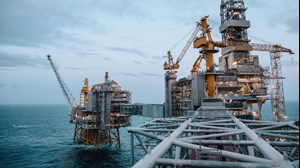Oil prices hold near 2018 highs as OPEC output looks to trail global crude demand
(Bloomberg) --Oil held near its highest level since 2018, with an OPEC+ meeting this week expected to bring supply increases that won’t keep pace with the global demand recovery.
The Organization of Petroleum Exporting Countries and its allies will meet Thursday, when they may decide to boost output by 550,000 barrels a day in August, a Bloomberg survey shows. That’s barely a quarter of the global deficit that OPEC+ anticipates during the month.
Physical oil markets are screaming for more supply. Prices are rising in the North Sea, the key region that’s central to the value of many oil transactions, while differentials for Nigerian grades have also made notable gains.
Still, Saudi Arabia, OPEC’s top producer, has so far proceeded cautiously, with the persistence of Covid-19 and the potential restoration of Iranian supply clouding the market outlook. In a possible complication to talks on an Iranian nuclear deal, U.S. forces conducted air strikes Sunday against Iran-backed militias blamed for attacking American facilities in Iraq, the Defense Department said.
“Crude oil trades steady, with market participants expecting OPEC+ will keep supplies tight enough to support current levels,” said Ole Hansen, head of commodity strategy at Saxo Bank A/S. “With virus uncertainties due to the highly contagious Delta strain and questions about an Iran nuclear deal hanging over the market, the group may opt for caution.”
Prices:
- West Texas Intermediate for August delivery slipped 2 cents to $74.03 a barrel at 8:48 a.m. in New York
- Earlier, futures rose as much as 0.5% to $74.45, the highest since October 2018
- Brent for August settlement lost 13 cents to $76.05 a barrel
The oil market’s structure continues to indicate tighter supply. Brent futures for August are 81 cents more expensive than those for September, a bullish structure known as backwardation. The spread was 40 cents at the beginning of this month.
All the while, the glut of crude stored at sea which built up during the pandemic continues to shrink. Stockpile on tankers fell 17% last week to the lowest since April 2020, according to Vortexa data.
Other market news:
- California road use is gradually moving toward pre-pandemic levels since the state lifted its Covid restrictions on June 11.
- Some of Asia’s biggest export-focused oil refiners are looking at cutting processing rates as a Covid-19 comeback crimps demand in parts of the region, and as China and India flood the market with excess fuel.
- The EPA has wide latitude to exempt refineries from federal mandates that they mix renewable fuels into gasoline and diesel, the U.S. Supreme Court ruled Friday, a victory for oil companies seeking a break from the requirements.



